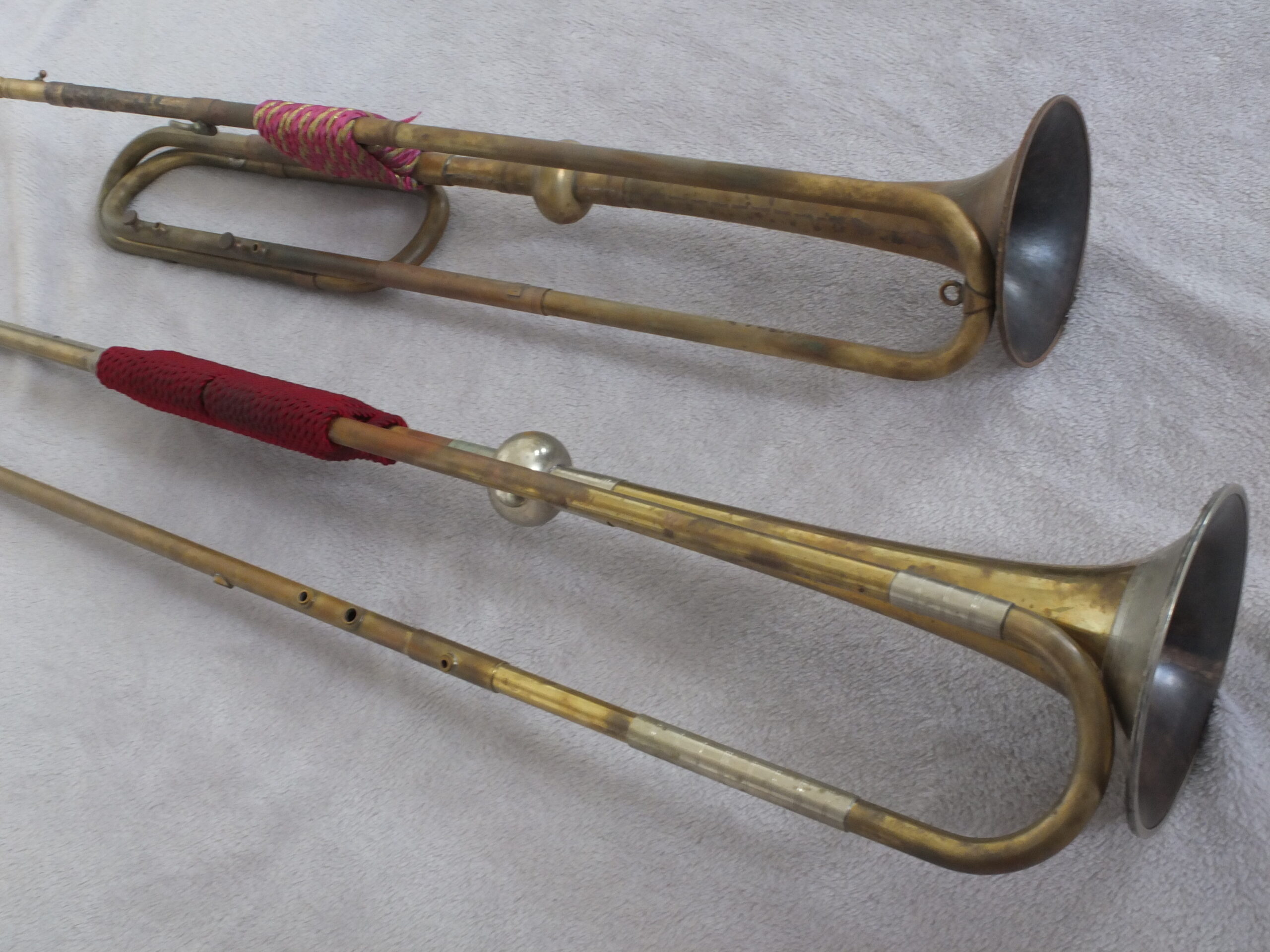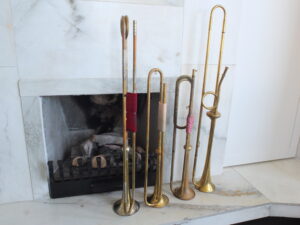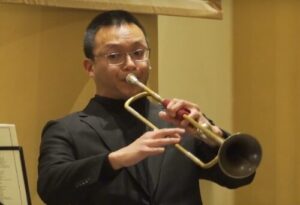It has been a while since the last update! Today we will talk about the systems of holes (venting systems) on the baroque trumpets and how to use them.
We hope it will be useful as reference when buying or learning to use your baroque trumpet.
Systems used on baroque trumpets
First we have to explain briefly that to make a sound on the trumpet, we need to make the air vibrate within the tube, which produces a type of wave called the standing wave. Along this standing wave, there are points where vibration is at minimum, these points are called nodes. The distance between the first and last node will affect the set of notes (overtones) that is available on the trumpet.
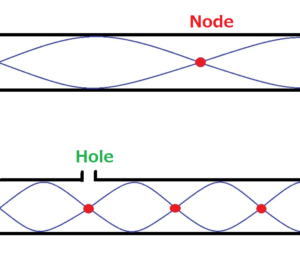
Installing a (vent-)hole and opening it when playing the trumpet will force the position of the nodes to shift, changing the behaviour of the standing wave, which allows the player to play from a different set of notes.
3-holes vs 4-holes
There are 2 systems commonly used in HIPP nowadays: baroque trumpet with 3-holes and baroque trumpet with 4-holes.
Both work on the same physical principle, but there are distinct advantages and disadvantages to each system.
3-holes: pros and cons
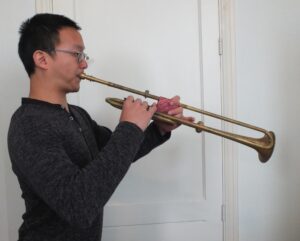
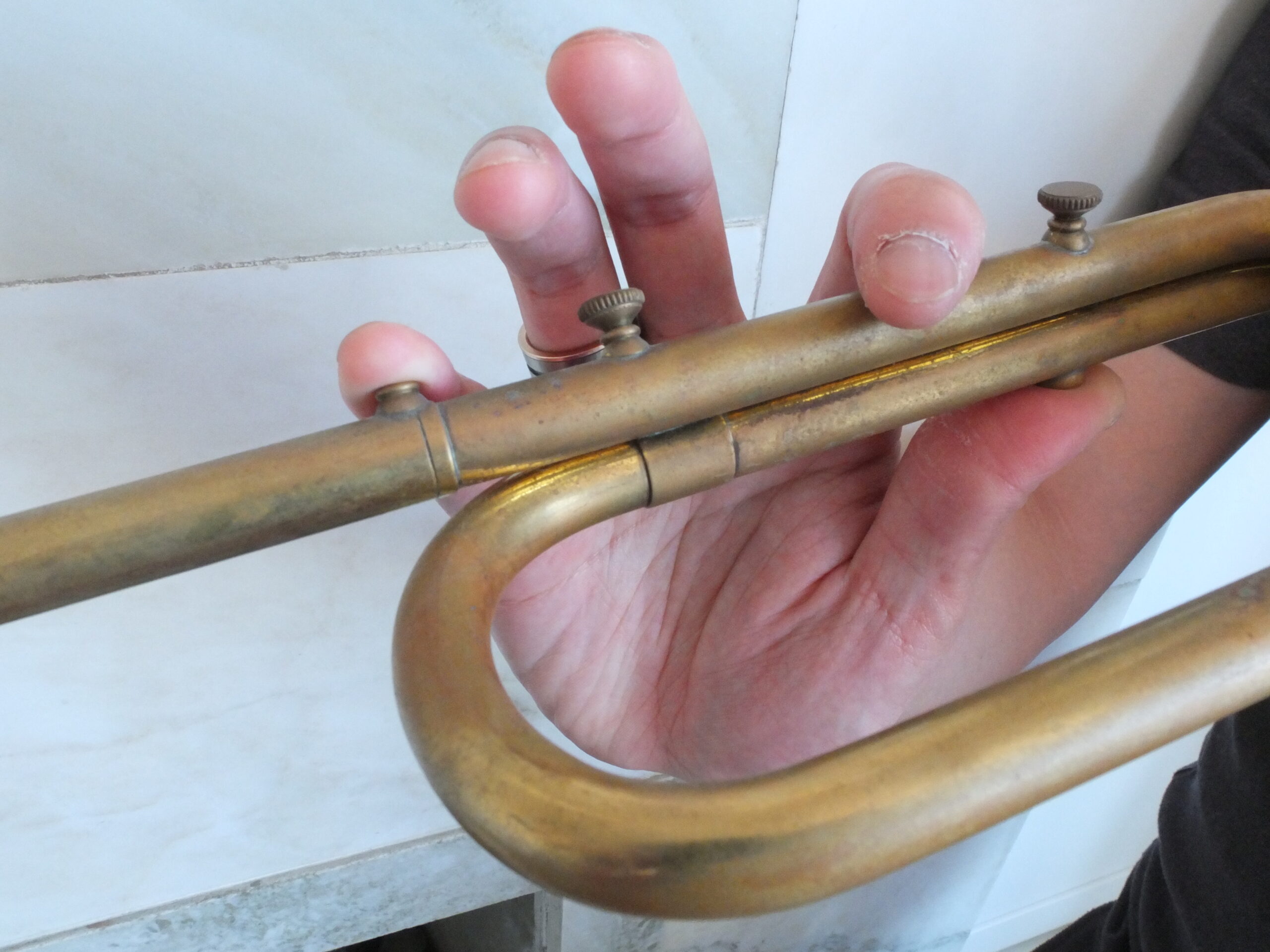
- Shorter in design length compared to 4-hole trumpets. Tubes are coiled in a way that puts the holes closer to the body and this makes it easier to hold.
(Overall tube length is the same, but coiling the tube makes the 3-hole system shorter in design) - Distance between the holes are not too big, and allows for a relatively comfortable hand position.
- Only need to control 3 fingers
- This system can be dismantled to fit in some modern trumpet bags/cases easily (~55cm external case length). This makes air travel easier as you are usually allowed to carry that kind of bags/cases up the plane as hand-carry baggage.
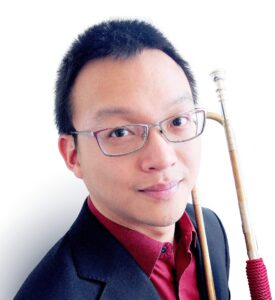
- Cannot be easily converted into a long natural trumpet (without holes)
- In the process of making the trumpet shorter and easier to hold, a part of the bell taper has to be cut off (compared to original and historical designs).
- The reason above causes the trumpet to behave differently compared to its original, unless the loss of that taper is compensated elsewhere in the trumpet. However, this is not that easy to fix, and is made more difficult by the fact that the trumpet has to be coiled to make the holes easy to use. This means it is harder to design and make a good 3-hole trumpet.
4-holes: pros and cons

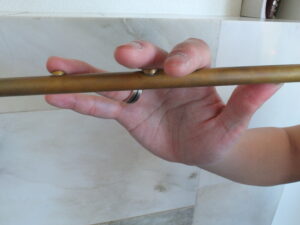
- Can be easily converted to a hole-less natural trumpet by swapping out a tube
- Bell length (and taper) is almost the same as those on original natural trumpets
- Easier to design to be in tune compared to 3-hole models (considering equal skill level of maker and quality of materials)

- Holes are further from the body, could be a stretch for people with shorter arms
- Distance between the holes are relatively big, might not be ergonomic for people with small hands
- More holes means more finger manipulation/control
- Requires a case of at least 70cm internal length, which can be a problem when flying with certain airlines
Let’s play
One of the common problems for people starting to play these trumpets is that they do not cover the holes properly, which causes an undesired leak in the instrument and the desired note may not sound well. It sounds obvious, but the fingers will take some time to get used to that, so it is something to keep in mind when you are just starting out on these trumpets.
Fingering
In general, playing the natural trumpet without holes gives a richer sound, but is very risky. Given the current state of rehearsal/performance practice, using fingerholes is recommended for most situations.
Using fingerholes will usually help with intonation, but at the expense of a slightly less rich sound. That is why most of the time we want to open only one fingerhole for notes that require them. Some notes might require more holes opened to fix the intonation, resulting in an even less rich sound. So that really depends on the musical situation and being flexible enough to adapt to it.
Open the corresponding fingerhole(s) of the cells with red dots/letters for the note listed.
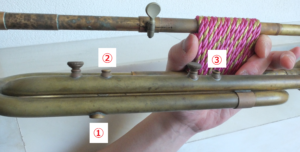
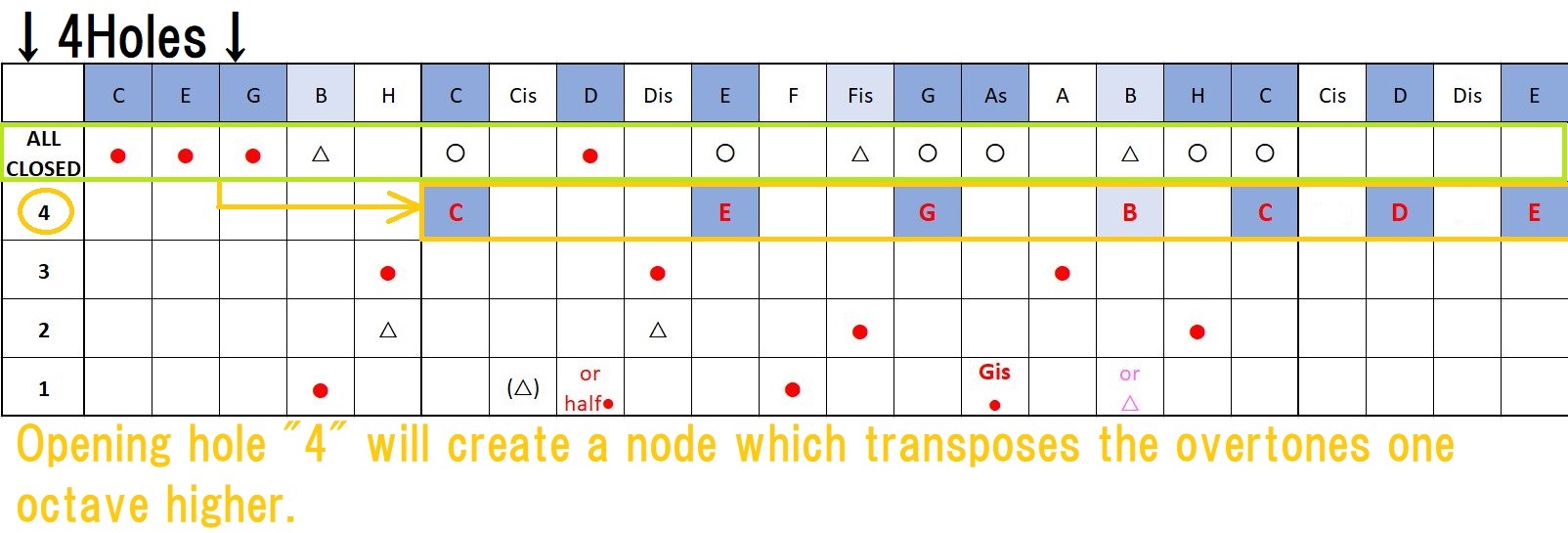
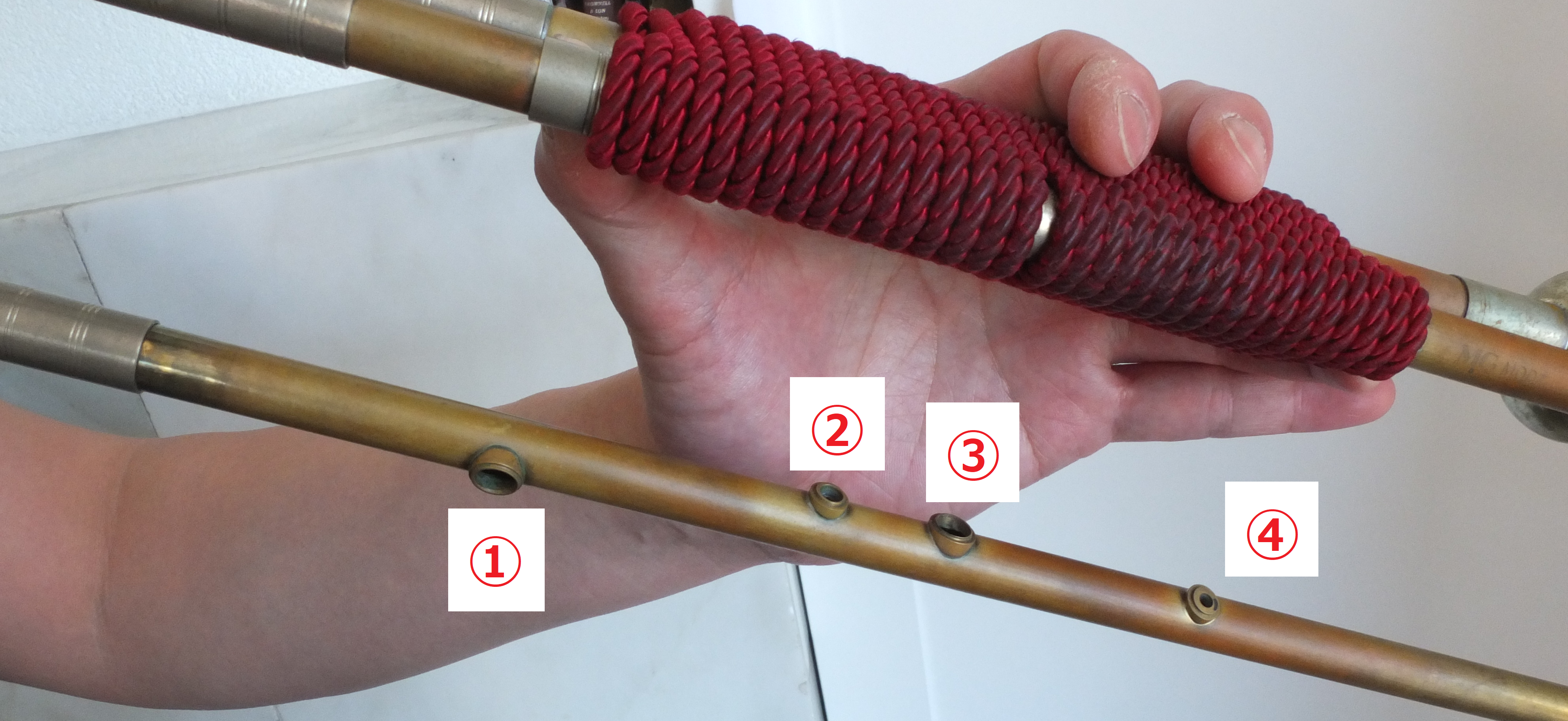
Fingering choice
In the charts above, we showed the basic fingerings, but you can see some notes have 2 options listed.D#/Eb & A of 3-holes, D & Bb of 4-holes require you to try them out and choose the best fingering for yourself.
That will depend on the combination and balance between the instrument, mouthpiece, and the player, so it is important that you know your instrument very well so that you can make an informed choice.
And again, we would like to emphasize that when you play with other musicians, it is best to be flexible to switch from your preferred fingering. Sometimes a simple switch can help a lot with fitting into the ensemble’s sound/intonation.
Regarding Bb of the 3hole system, most of those trumpets display this tendency: without using fingerholes it is very flat, and using the listed fingerhole will raise the pitch relatively sharper at quite a large expense of sound. However there are situations where using the fingerhole is highly recommended, and that depends on the key of the music. For example, when you play in G-minor, using the fingering opening 2nd hole (to make the Bb sharper) would be the most appropriate choice. The reason is because the Bb is the 3rd in the G-minor chord, and it needs to be a little sharper so that the chord would sound as pure as possible.
*What is a “pure” chord would be another topic for the another article.
We understand that the above can sound quite complicated, so if in doubt or if you are having difficulty in deciding the right finger choice, the general advice would be: Sound first before intonation! A better sound will have more overtones, and most of the time these overtones will mix with the ensemble sound to give the illusion of being “in tune”. Trying to force a sound to fit intonation will almost always result in lesser overtones, and that will give the illusion of sounding out of tune even if you are in tune according to a tuning machine.
Which is better? (according to Danny)
There is no clear answer as to which system is better, however I am currently using a 4-hole trumpet as my main instrument.
There are a couple of reasons. Firstly, I am based in The Netherlands and even if I have to travel abroad for work, I can easily commute to Germany or France by train, so that means the size/length of my case is not a problem.
Secondly, the maker of my trumpet, Mark Geelen, is also living in The Netherlands. He builds both historical and modern trumpets, but only makes a 4-hole version of the historical natural trumpet. He is a highly trusted and superb instrument builder, and the fact that I can visit him easily for adjustments of my instrument is a big advantage for me.
Finally the big reason is due to the current music “work” situation. Nowadays, sponsorships/budgets are limited and HIPP musicians are usually hired on a freelance basis. It is also mostly the case that we have to play for a concert with only one rehearsal. This means that we usually do not play together with the same group of people often, unlike a standard (modern) orchestra. So for example, if you are struggling with intonation playing in a new environment (which usually results in playing wrong notes on the trumpet) and have to do a concert right after, there could be a chance that you will never be called back for work if you miss too much notes because of the fact that you cannot adapt to the environment!
Therefore, to expand the possibilities of making good music with limited rehearsals, I chose a 4-hole trumpet so that I can be flexible to adapt to my environment.
That being said, the main thing to consider when looking for a baroque trumpet is:
Is that trumpet good for my needs or not?
It does not matter if it is a 3-hole or 4-hole trumpet. If the trumpet is a good fit for you, that is what matters most.
It is highly advisable to try as many trumpets as possible, either from colleagues or teachers or visiting a reputable instrument maker. From there you can make decisions based on the sound/connection to the instrument. The most important thing is that you find the instrument you really love, since you will have to play on it for a long time!
 Danny
DannyThe “perfect” instrument will also find you!
